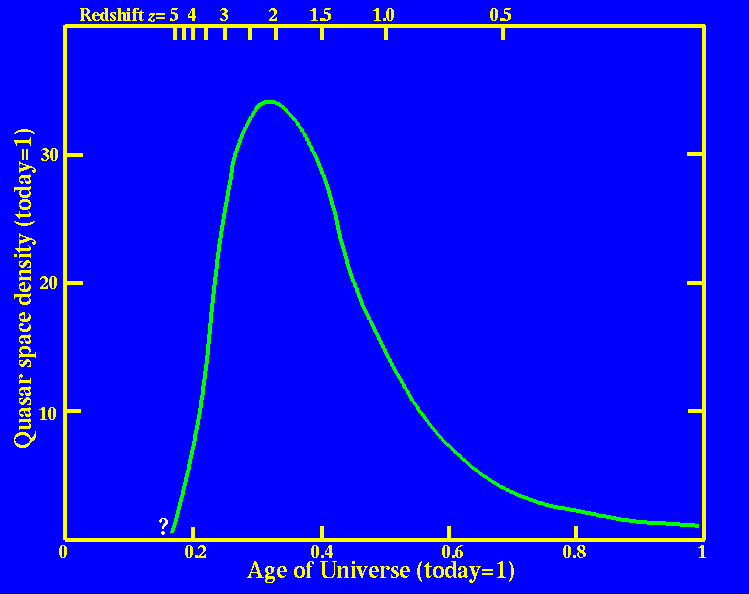
Many studies of the number of quasars (including radio-quiet QSOs) show that there were many more at high redshifts than we see today. Many more, that is, up to a certain point at about 1/3 of the Universe's present age. Before that there are progressively fewer, a phenomenon known as the redshift cutoff. This is illustrated here using a smooth fit to data from a recent study by Peter Shaver and collaborators. The transformation from redshift to cosmic time uses the approximation of a low-density Universe; for simplicity; changing the amount of matter in the Universe alters the deceleration parameter, and thus the exact correspondence between linear time and redshift z. The number of quasars per unit volume must be examined in what are known as comoving coordinates - that is, with the expansion of the Universe factored out. Otherwise, whatever kind of objects we observe would show a cubic dependence on (1+z) simply because they were more squeezed together at earlier times. Instead, quasars (and for that matter, radio galaxies) were actually much more common in the early Universe.
There have naturally been numerous speculations as to how this happened. Some suggest a link to galaxy formation, perhaps through the epoch when massive black holes were being fed most effectively. If galaxy collisions are the most efficient way to feed the monster, maybe this is when collisions and mergers were most common. The redshift cutoff has been variously addressed as due to the formation of quasar cores or as a selection effect - might we have trouble seeing quasars at higher redshifts, because of the accumulated effects of dust in foreground galaxies that are individually too dim for us to see? At this point, probably not, but the improving access and sensitivity of infrared observations should soon be able to tell us with certainty. For now, I left a question mark back there at the start of our knowledge of quasar history.